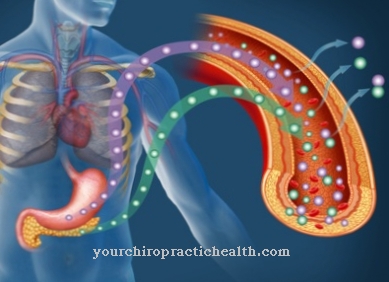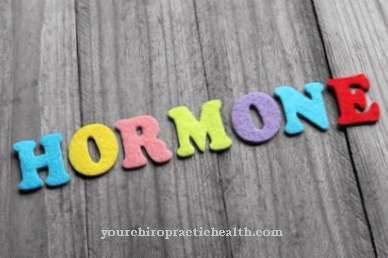In the body's own Apoptosis the body initiates the cell death of individual body cells. This process takes place in every organism in order to rid the body of sick, dangerous and no longer necessary cells.Disorders of the body's own apoptosis can lead to various diseases such as cancer or autoimmune diseases.
What is apoptosis?

The programmed cell death of body cells is known as the body's own apoptosis. In the process, body cells die that the organism no longer needs or that can be dangerous for it.
Within each cell there are inactive suicide factors that are activated when apoptosis is to be initiated. In contrast to necrosis, however, apoptosis is a programmed cell death. During this process, no cell components escape.
Before the start of apoptosis, the corresponding cells are first separated from the tissue cell structure. Then an intracellular breakdown of the chromatin, the proteins and the cell organelles begins, whereby the cell shrinks.
Outwardly, the cell membrane forms bubbles. The remaining cell components are immediately disposed of by phagocytes. The entire process of the body's apoptosis only allows certain cells to die. The neighboring tissue is usually not affected.
Function & task
The body's own apoptosis is an absolutely vital process for the organism. It ensures the undisturbed function of healthy and functional cells. Apoptosis takes place throughout life. The constant selection of body cells must be guaranteed, particularly during the development of the organism. The differentiation of the body organs could not function exactly without simultaneous apoptosis. However, there must always be a certain relationship between the formation and death of cells.
Cell formation and cell breakdown are in balance in an adult organism. Old cells are replaced by young cells. New cells are only created through cell division. If there were no apoptosis, the number of cells would keep increasing. It is therefore necessary that cells constantly die in a targeted manner.
In the growth phase, apoptosis ensures that only those cells that are of use to the organism continue to multiply. The suicide program is activated in sick, old and less effective cells. For example, to ensure the correct interconnections in the brain, up to 50 percent of all nerve cells die again before birth. In the adult organism, apoptosis is used, among other things, to control the number of cells and the size of the organs, to break down harmful and unnecessary cells of the immune system, to rejuvenate certain tissues, to eliminate degenerate cells or to select germ cells.
So far, two ways to induce apoptosis have been discovered. A distinction is made between type I and type II apoptosis. In type I apoptosis, also known as the extrinsic route, the process is initiated externally by binding a ligand to a receptor of the TNF receptor family. The second path (intrinsic path) begins within the cell and is triggered, among other things, by damage to the DNA. In both cases, a cascade of enzymes (caspases) is initiated, which are responsible for the breakdown of the body's own organelles, proteins and chromatin.
The subsequent elimination of the cell components by scavenger cells (phagocytes), in contrast to the disposal of necrotic cells, takes place without inflammatory processes.
The balance between controlled cell death, permanent cell renewal and the removal of dead cell components is of existential importance for the organism. The disruption of this balance can lead to serious health problems.
Illnesses & ailments
Disorders in the body's own apoptosis play a role in many diseases such as cancer, autoimmune diseases or viral diseases. For example, if a cell in the body is infected with a virus, it immediately starts producing further viruses due to the incorporation of the virus genome into the DNA. Most of the time, the affected cells react with apoptosis.
To prevent this, many viruses have developed a counter-strategy. They often reprogram the cell to produce apoptosis-inhibiting substances. The cell does not die and produces more and more viruses, which in turn infect other cells. Antivirus agents should intervene in the mechanism precisely at this point.
Sometimes not only the virus-infected cells are eliminated, but also the neighboring tissue. This excessive effect is, among other things, the explanation for the extensive liver damage caused by virus hepatidae, although only a few liver cells are infected by viruses.
In the case of autoimmune diseases, on the other hand, immune cells attack the body's own cells and destroy them. Defective processes in apoptosis also play a role here. The thymus is the control organ for immune cells. All lymphocytes have special receptors that only react to certain antigens. In the thymus it is checked which antigens the receptors bind to. If they react with the body's own antigens, the corresponding cell is sorted out and made to die through apoptosis. If the selection process does not work properly, too many autoaggressive immune cells come through and later cause an autoimmune disease.
In another mechanism it was discovered that the dead cells are removed too slowly by phagocytes. The immune cells that react in the meantime also attack healthy cells. In cancer, on the other hand, apoptosis is reduced, so that only cell renewal takes place without programmed cell death.



.jpg)









.jpg)

.jpg)
.jpg)











.jpg)